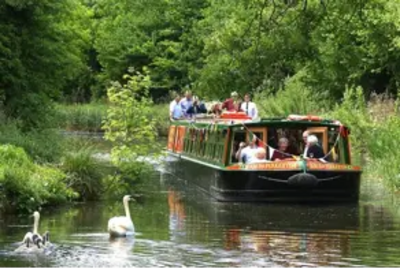Boats could be in central Chelmsford, with plans to improve access to rivers

Boats could get access to the centre of Chelmsford for the first time in many decades, following a decision of the Lib Dem led Chelmsford City Council's Cabinet on Tuesday 8 September. Councillors agreed to commission a detailed feasibility study into replacing flood gates to the east of the city centre and adding lock-gates. This would allow boats to pass further west, up the rivers Chelmer and Can.
If found to be feasible, replacing the automatic flood defence gates and adding a lock should allow the whole stretch of the River Chelmer from the Heybridge Basin through Chelmsford to be navigated. Currently boats cannot navigate any further than the weir gates, situated near the Essex Record Office.
The automatic gates were built during the 1960s and are mainly used to retain water in the river by the city centre. Without them, water levels would be very low and even non-existent in some parts each Summer. They are currently operated by the Environment Agency (EA) however, the EA has indicated that it can no longer justify the continued maintenance of the gates.
Cabinet Member for Greener and Safer Chelmsford, Councillor Rose Moore, said, "Improving our waterways is a key objective in the Council's new 'Our Chelmsford, Our Plan' and I am delighted that we are delivering on that objective. The City Council's Waterways Working Group is promoting this plan as one way to improve and encourage the varied use of the city's waterways and adjacent paths and open spaces, and we want to engage the wider waterway user community.
"One of the key aims of the Working Group has been finding ways to enable navigation to the upper Chelmer. I am pleased that Cabinet has now agreed to develop these studies further."
Lib Dem Leader of Chelmsford City Council, Cllr Stephen Robinson, said, "Enabling boats to access central Chelmsford's waterways has long been an aspiration for many of us. There are still a number of further steps to take before this becomes reality. However, this full feasibility survey will enable the Council to assess the viability, design solution and full costs, before deciding whether the scheme should be taken forward. This is a positive step forward and we look forward to seeing the detailed feasibility study
